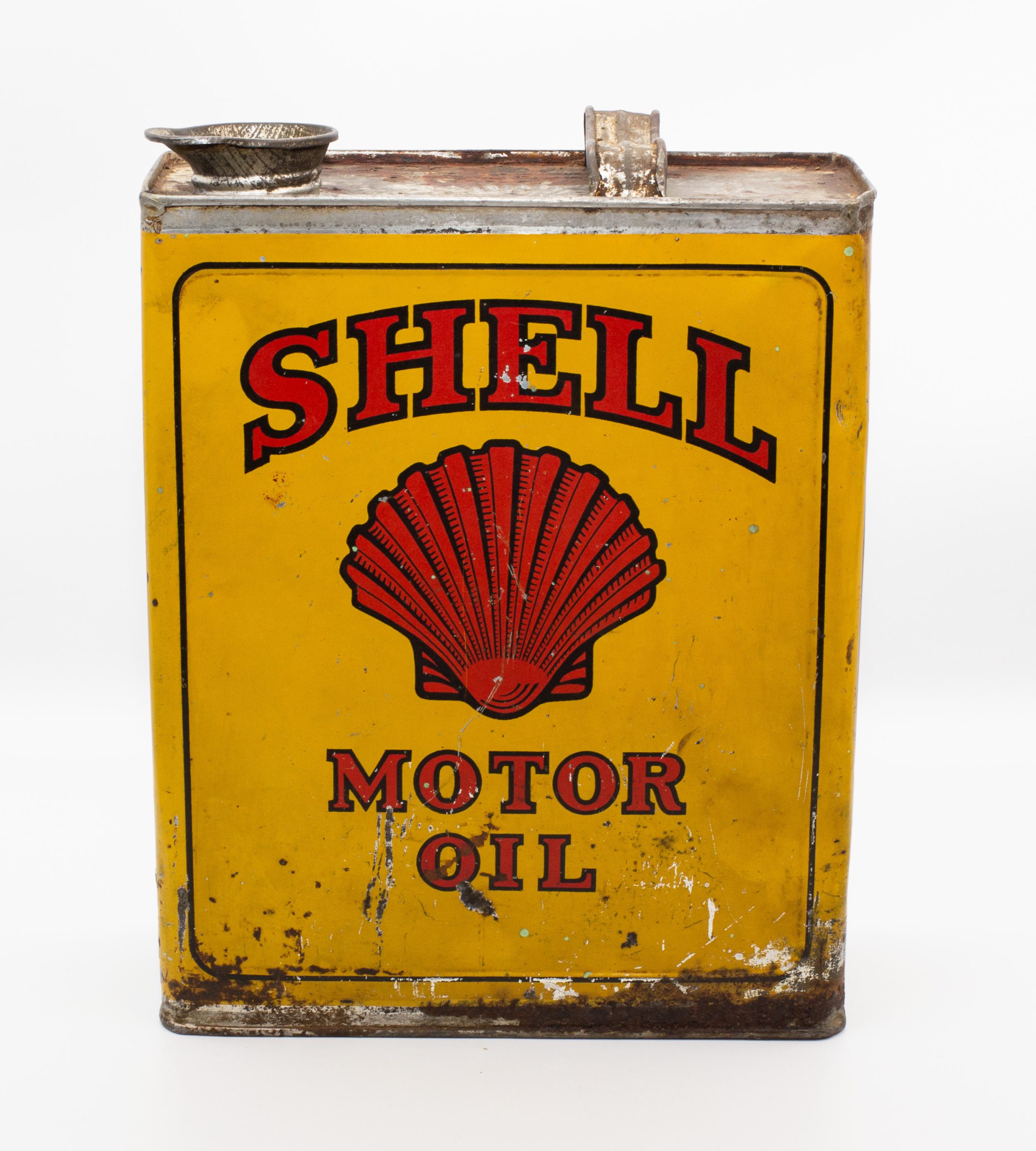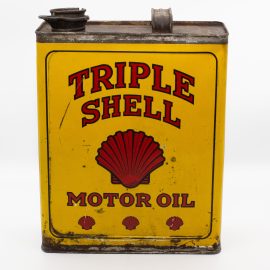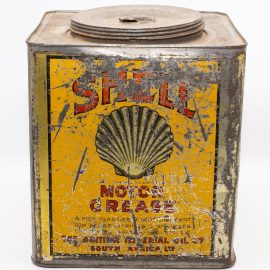
31 May Stories From the Stacks: Fuelled Up
A regular series about the museum’s motoring memorabilia and behind-the-scenes activities, compiled and written by FMM’s Assistant Curator Sian Theron. This month, Sian gets all fuelled up in a can…
The museum is lucky to have a fantastic selection of antique motor oil and spirit cans. While today they serve a more aesthetic purpose thanks to their vintage charm, in their heyday these cans were highly necessary as receptacles for motor spirit or as we know it today, petrol. Since the beginning of motoring, petroleum companies have naturally played an integral part in the development of automotive transport.
Some of today’s petroleum companies have been in existence for almost as long as automobiles themselves, and Shell is one such company, not just internationally but in South Africa in particular.
Shell started off in life as a sea-shell import company under the auspices of Samuel Marcus. Later, when Kerosene became a major market product, Marcus’ sons chose to retain the company’s initial roots in the name ‘Shell’. With the growth in popularity of the motor vehicle and the need for petroleum, the Shell Transport and Trading Company was started in 1897. In 1907 the company became Royal Dutch Shell, although generally the name was shortened to just ‘Shell’.
In South Africa, early petrol stations were few and far between, with Shell first coming to the country in 1902. The company’s iconic Art Deco headquarters in Greenmarket Square, Cape Town was built between 1929 and 1941. The building still stands today, but is now an hotel.
Shell-Mex was one of the earliest motor spirit offerings, and as petrol bowsers and service stations were not numerous during the early motoring years, motorists would buy in bulk and carry spare fuel with them in cans. Motorists would keep spare fuel on their vehicle’s running boards, examples of which can be seen on the vehicles on display in Hall A.





